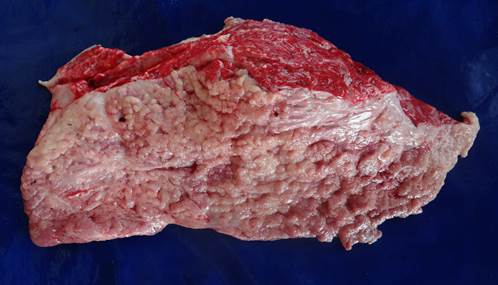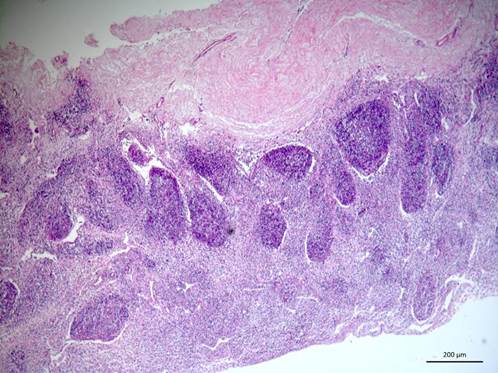ABSTRACT:
Polyserositis are inflammatory changes of the visceral and parietal serous of body cavities. A special type of polyserositis was identified in buffaloes in the 80s, being associated with infection by Chlamydia psittaci. Since these pioneering studies, there are no additional works about the condition. Considering the importance of buffalo in Pará, the zoonotic character of C. psittaci and the possibility of involvement of other agents in polyserositis in buffaloes the present study is proposed. We collected cases identified as polyserositis by sanitary inspection service in buffalo slaughtered for consumption in Belem for a complementary characterization of inflammatory cell and the research of Chlamydia spp antigens in lesions. Of 2.887 buffaloes slaughtered in a period of six months, there were 48 (1.66%) cases of polyserositis and 39 analyzed. Santa Cruz do Arari in Marajó Island was the city with the highest frequency of cases, whereas 6.49% of buffaloes had lesions. However, 50% of the present study cases came from Soure municipality in Marajó Island, which provided about 49% of buffaloes slaughtered in the period. In the macroscopy, there were opaque areas with white-yellow thickening of the serous, sometimes with fibrous fringes on the surface. Histopathology showed connective tissue projections partially lined by cuboid or flattened mesothelial cells. Often in projections there were mononuclear infiltrate of variable intensity, consisting mainly of lymphoid cells, with occasional ectopic or tertiary lymphoid follicles.
INDEX TERMS:
Polyserositis; buffalo; Bubalus bubalis; lymphocytic polyserositis; chlamydiosis; tertiary lymphoid tissue; pathology

 Thumbnail
Thumbnail
 Thumbnail
Thumbnail
 Thumbnail
Thumbnail
 Thumbnail
Thumbnail
 Thumbnail
Thumbnail
 Thumbnail
Thumbnail





